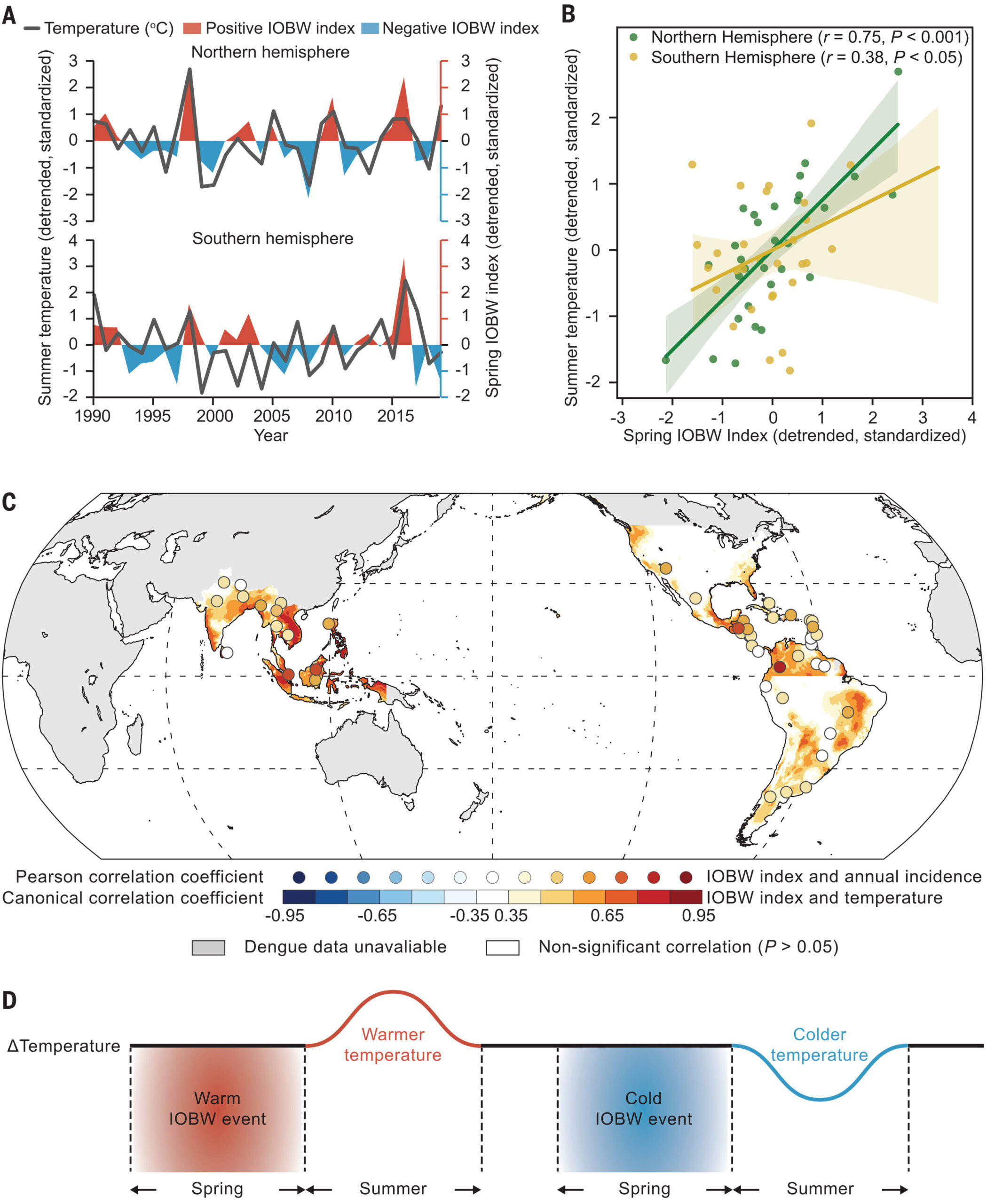
by Bob Yirka , Phys.org
Association of the IOBW index with local temperature and dengue incidence, based on detrended data.
(A) Time series of the spring IOBW index (red shading: positive index; blue shading: negative index) and the local summer temperature (black line) from 1990 to 2019.
(B) Scatterplot of spring IOBW index versus mean local summer temperatures in the Northern (green; r = 0.75, P < 0.001) and Southern (yellow; r = 0.38, P < 0.05) hemispheres.
(C) Map of correlation coefficients of the IOBW index with annual dengue incidence and local temperature respectively.
(D) Schematic diagram of the teleconnection between IOBW events and local temperatures. Credit: Science (2024). DOI: 10.1126/science.adj4427
A team of Earth scientists, health care workers and meteorologists affiliated with several institutions in China, and working with several international partners, reports that global dengue severity in Asia and South America can be predicted by sea-surface temperatures in the Indian Ocean in the months leading up to dengue season.
In their study, published in the journal Science, the group modeled connections between climate patterns and the magnitude of dengue epidemics in parts of both the Northern and Southern Hemispheres.
Dengue fever is a mosquito-borne flavivirus disease, affecting nearly half the world’s population. Currently, there are few treatments and no cure. Outbreaks of the disease are most common in Asia and South America and happen during the rainy season, when mosquito populations rise.
The magnitude of outbreaks can vary widely, which makes it difficult for health officials to prepare each season. Current attempts to predict the magnitude of an outbreak for any given year are based on weather models, which have not proven to be reliable.
In this new study, the researchers found evidence that surface temperature readings prior to dengue season may be a much more accurate predictor of outbreak severity.
The work involved comparing 30 years of historical climate data from 46 countries in Southeast Asia and South America, with the magnitude of dengue outbreaks. The researchers discovered that the Indian Ocean basin-wide (IOBW) index, which is a measure of average sea-surface temperatures, could serve as a reliable predictor of both the timing and magnitude of coming dengue outbreaks for both the northern and southern hemispheres.
They suggest that further research could more clearly establish causality between the IOBW index and the likely magnitude of outbreaks in specific areas. They also note that other transmission factors (particularly those that are local) can also play a role in the development and progression of a given dengue outbreak.
